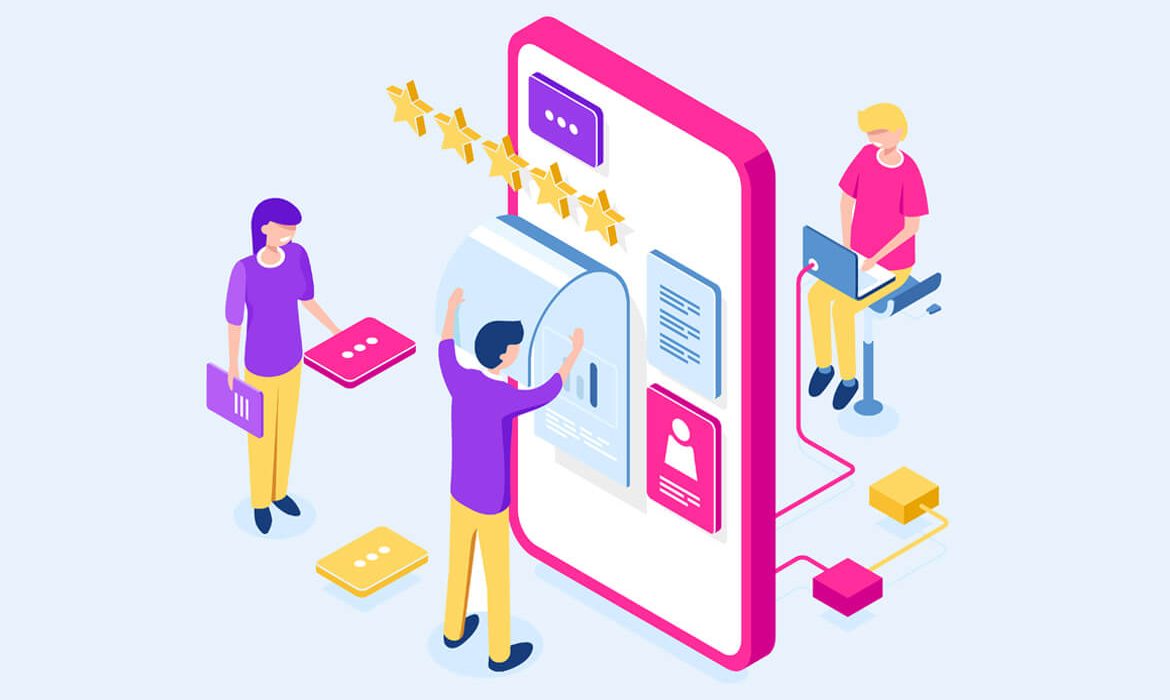When and Why to Use a Staging Environment
If you’ve worked with a web development company before, you’ve likely experienced working with a “local” or “staging” environment first.
What is a Staging Website?
A local or staging website is basically your website setup in an environment that is not live to the public internet. It’s typically where developers work when they’re making bigger changes, and you, the client, can access and interact with the website as if it were live. Others may find this website, too, but only if given the link to do so.
Setting up a local or staging environment for your WordPress site is an essential step in the development process to ensure a bug-free website. Whether you’re creating a brand-new website or making changes to an existing website, using a local or staging environment can help you speed up the development process.
Why Setup a Staging Environment for your Website
Some people may think that this will take more time than just making changes to your live site. Initially, it may be a bit time consuming, but you will thank me in the end.
Developing locally or on a staging site gives you the freedom to experiment without the repercussions. If you have a lot of traffic to your site, you may not want to experiment with changes on your live site. You may make a wrong change that can snowball and possibly take your site down. Developing locally gives you the freedom to make mistakes and errors till you finally get it right.
Plugins & Staging Environments
When choosing plugins, it is also wise to test them out on a local or staging environment if you have not used the plugin before. Some plugins do not work with certain hosting partners, so it is important to check any documentation before you implement them live. Using a local environment also allows you to properly learn how to use the plugin and see how the plugin reacts with your site and other plugins.
Local Development & Security
Developing locally is also much more secure. Since all your files are on your computer, you will not have to worry about security at this point. This is not as true with a staging environment since staging environments still run on a server.
ADA Website Compliance
You can also work on ADA compliance and cross browser testing while working in a local and staging environment. ADA compliance has become a must to adhere to while developing a website. Websites should be accessible to all and ensuring your website is compliant before you push it live is important.
Responsive Website Development
Since visitors to your site may use different operating systems or mobile devices, you should ensure that your website is fully functional across all browsers and screen sizes. While your site may work fine in Google Chrome, it may not function 100% in Safari or Edge. You also want to make sure your site is responsive and works on mobile devices.
When Not to Use a Staging Environment
It’s generally best practice to use a staging environment on a live website when you are making large changes to a template. One of the downsides of using a staging environment to make minor edits is that you will need to duplicate the live site, make the changes on staging, and then push those changes to the live site.
If someone is actively managing the live website during this time, pushing the changes from staging over to live will erase all those changes and they will need to be done again. Your web developer can guide you further on best practices for using staging environments and best practices around that.
Are You Bungling Your Blog Homepage Design?
When you’re first starting a blog for your business, it’s easy to forget about its homepage design. You’re focused on getting posts up on the blog so you can start ranking in search. You care about placing calls-to-action in your posts. You devote time to distributing your posts on social media to help bring in some more traffic. Your homepage design is something that gets set up with a “good enough” mentality … but it’s actually a key page to optimize on your website.
To help you get your business blog off to the right start (or revamp it if it wasn’t set up correctly in the first place), keep on reading, We’ll dig into the biggest mistakes companies can make with their blog homepage designs so you can avoid these same pitfalls.
1) Not Including Social Follow Buttons
Social follow buttons are a little bit different than social share buttons. Chances are, you already have the latter on your blog, but the former is especially handy to have on your homepage. Social follow buttons allow your readers to follow your profile on various social networks while social share buttons allow your readers to share your content without following you.
Social follow buttons can help increase the likelihood that your readers consistently see the content you post — because once they follow you, whenever you post out a new blog post on social media, there is a chance that they will see it and know you have new content available. And the more times your social media followers see and click on your content, the more blog traffic you’ll get.
2) Making It Difficult to Subscribe Via Email
If you want to maintain a relationship with your regular readers, you need to encourage them to subscribe to your blog content via email. Without an email notification that you have new content up on your blog, it can be difficult to get people back to your website again and again. But most people won’t go out of their way to find out if they can subscribe to your blog — you need to make it super easy for them to do so.
This means you need to make the subscribe option front-and-center, and make the form very short and easy to read. If you want someone to subscribe to your blog, only ask for the information you need for them to subscribe — usually just their email address and/or frequency preferences. You can then use that information to nurture your blog subscribers into leads.
3) Not Including CTAs in Your Sidebar
Somewhere on your blog homepage you should have a call-to-action to another offer from your company. By having this CTA you will accomplish two goals. First, you will provide more valuable content to your blog readers to help them get more interested in your company or industry. Second, you will increase your chances of turning your blog readers into leads.
While you want to make CTAs prominent on your blog homepage, they shouldn’t clutter your entire blog homepage. Think about what makes the most sense for your blog readers to do next. What type of content do you think they are most interested in downloading and reading? What other offers might they be interested in? Pick one or two that make the most sense for your company and carefully place them on your homepage in a place that’s noticeable but not disruptive.
4) Not Highlighting Recent Posts
The more articles people read on your blog, the more interested they can become in your company — so it’s in your best interest to make it easy for people to discover more content on your blog. One way to do that is to have an easily accessible list of recent blog articles right on your homepage.
5) Not Including Your Website’s Navigation Bar
Blogging helps you attract people to your website — but once they get there, you need to make it easy for them to navigate. When creating your blog, make sure to retain the same navigation as the rest of your website. This will allow your readers to hop easily between your blog and the rest of your website.
On New Breed Marketing’s blog you can see the navigation no matter where you are. If you are on the blog homepage, you can quickly get anywhere else on the website to see product information, services, case studies, or contact information. Similarly, if you are on another page, you can quickly hop back to the blog for more education on their industry. It’s a simple addition that can make a big difference in your web traffic.
6) Not Making Your Homepage Visual
When people come to your blog homepage for the first time, an overwhelming amount of text could scare them off. That’s where a visual blog homepage design can really help. The visuals on a blog make it easier to understand what the content is about while also looking less intimidating to a new reader.
Let’s take Yoh’s blog for example. When you come to their homepage, you see a visually appealing site. Each blog post has a featured image along with the blog post title. It looks beautiful and appealing while also being easy to use and navigate.
What else do you think is important when working on your blog homepage design?
Tips Defining Your 2022 Digital Marketing Strategy
The future of digital marketing is now. Companies that plan ahead and strategize for success in 2022 will be the ones reaching their goals, but many businesses are still scrambling to define their strategy.
If you want your business to thrive in the digital age, then you need a strategy. This blog post will go over a few tips for you to define your business’s 2022 digital marketing strategy.
Set Goals
The first step in any plan is to set a goal. You can’t achieve what you don’t know, so it’s important to define the end result of your digital marketing efforts. Think of where you are and where you want to be. Knowing how you want to end 2022 will help you define the plan to get there.
Here are a few examples of goals to set when thinking about your 2022 marketing plan:
- Increase number of inbound leads by X amount
- Grow social media followers by X amount
- Increase number of closed sales/customers by X amount
Also keep in mind that you can be flexible with your goals. If COVID-19 taught us anything, it’s that priorities and goals shift as things happen around us.
Schedule, Schedule, Schedule
When it comes to digital marketing, consistency is of the utmost importance.
If you’re a marketing director or CEO running your company’s digital marketing, make sure to schedule items out. Our agency works with clients to establish some content a year in advance, while other items (like social media) are planned quarterly.
Do your best to make that schedule and stick to it. Remember – consistency is better than being perfect!
Allocate Your Budget
One thing we know that small and medium sized businesses struggle with is how to define their annual marketing budget. Your annual budget will vary depending on the type of marketing you want to do because each carries a different cost.
Review 2021’s financial information and see what sticks out. Did your Google PPC campaign provide the lowest cost per lead? Was TV your biggest brand awareness driver?
Use data points like these to define your most impactful marketing items and go from there. You can always enlist the help of a Florida digital marketing company to help.





